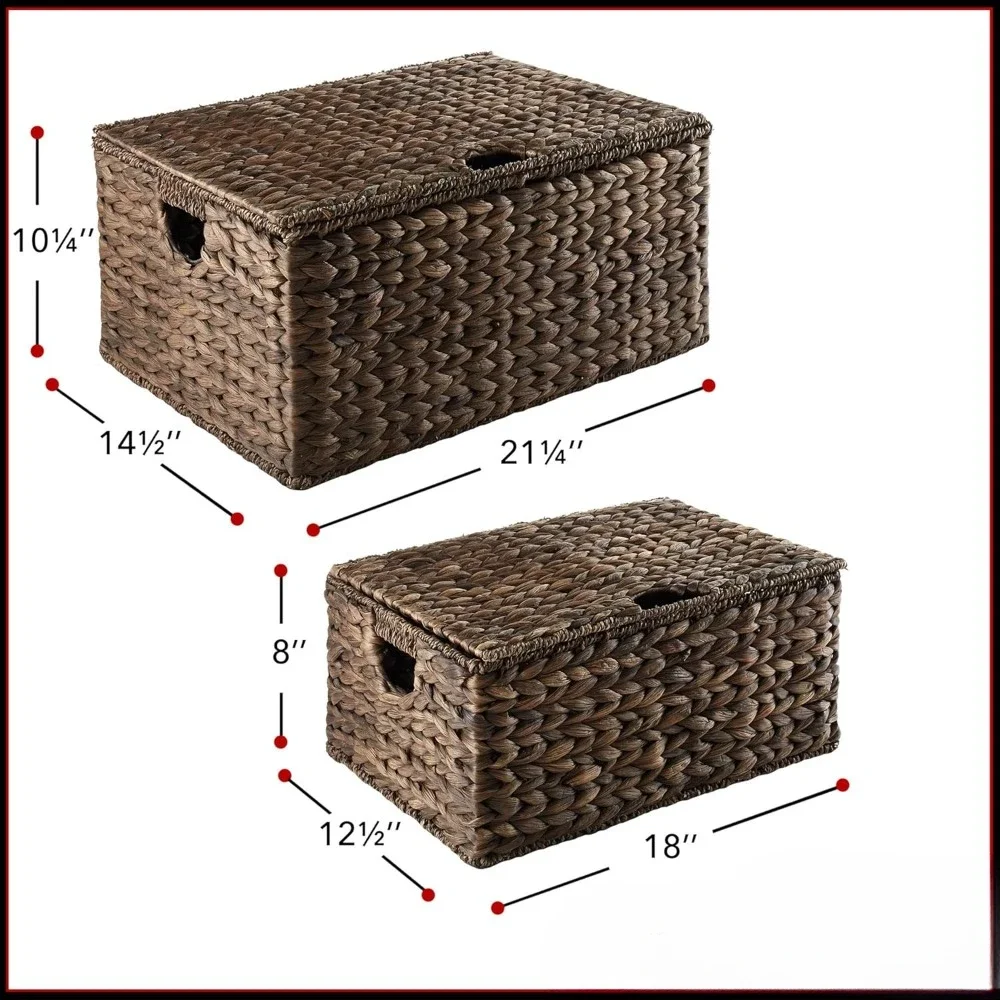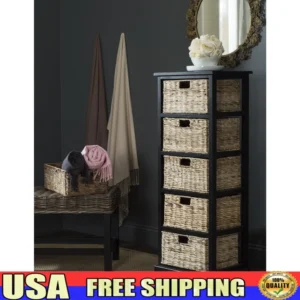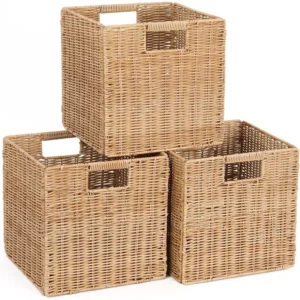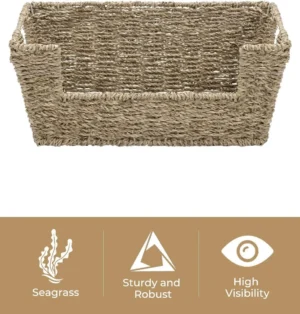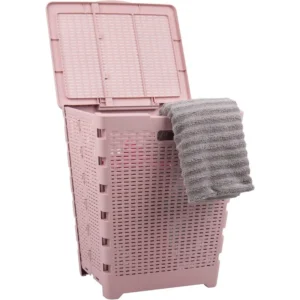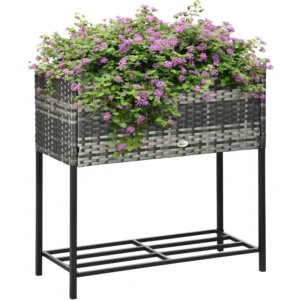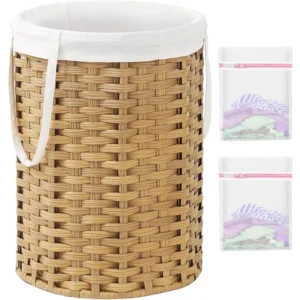Understanding Basket Materials and Their Preservation Needs
Baskets have been trusted storage solutions for centuries, combining practical function with beautiful form. However, their natural materials require specific care to maintain both their structure and appearance over time. Proper preservation techniques not only extend the life of your baskets but also maintain their aesthetic appeal and monetary value.
Different basket materials have unique characteristics that influence their preservation needs:
- Wicker: Typically made from willow, wicker is durable but can dry out and become brittle
- Rattan: Strong and flexible with a glossy surface, vulnerable to splitting if too dry
- Bamboo: Sturdy and rigid, resistant to warping but can crack if humidity fluctuates
- Reed: Pliable when wet but becomes firm when dry, prone to mold in humid conditions
- Cane: Smooth surface with natural sheen, susceptible to brittleness and breakage
- Grass/Palm: Softer fibers that require gentle handling to prevent breakage
Understanding the specific qualities of these materials is essential for proper organizing laundry wicker baskets and other basket types. The most common threats to basket longevity include humidity fluctuations, prolonged light exposure, pest infestations, improper handling, and poor storage conditions.
Many of our rattan baskets can last for decades—some well-preserved antique baskets are over 100 years old—but only with proper care. Since all these natural fibers are inherently biodegradable, preservation techniques become crucial to prevent deterioration and maintain their beauty and function for years to come.
Essential Handling Techniques to Prevent Damage
Proper handling is the first line of defense against basket damage. Following these techniques will help preserve your baskets for years to come:
Support from below: Always place your hands beneath the basket’s base when lifting. Never lift by handles or rims alone, as this can strain and eventually break these weaker points.
Use two hands: For baskets of all sizes, use both hands to provide balanced support. For round baskets, place hands at opposite sides of the base; for rectangular baskets, support along the longer sides.
Keep hands clean and dry: Natural oils and moisture from your hands can transfer to basket fibers, potentially causing staining or weakening over time.
Move with care: When relocating baskets, plan your path to avoid bumping into objects. Move deliberately and slowly, especially with larger baskets.
Recognize fragility signs: Before handling, check for loose weaving, cracked fibers, or weak spots. If you notice these issues, provide extra support in those areas or consider repairs first.
For antique or ceremonial baskets, additional precautions may be necessary. Consider wearing cotton gloves to prevent oils from transferring to these valuable pieces. Following proper basket maintenance care guide practices ensures your baskets remain beautiful and functional for years to come.
Creating Optimal Environmental Conditions
The environment where you keep your baskets significantly impacts their longevity. Maintaining ideal conditions helps prevent common issues like mold growth, brittleness, and color fading.
Humidity Control
The ideal relative humidity range for basket preservation is 45-55%. This balanced level:
– Prevents excessive dryness that causes fibers to become brittle and break
– Avoids high moisture that promotes mold and mildew growth
– Maintains flexibility without compromising structural integrity
Solutions: Use humidifiers in dry winter months and dehumidifiers during humid summers. Humidity monitors are inexpensive and highly recommended for spaces where you store valuable baskets.
Temperature Management
Keep baskets in environments with temperatures between 60-75°F (15-24°C). Temperature stability is more important than the exact number—sudden fluctuations cause expansion and contraction that weaken fibers over time.
Avoid placing baskets:
– Near heating vents, radiators, or fireplaces
– In direct contact with air conditioning units
– In uninsulated attics or garages with extreme temperature swings
Light Exposure
UV light causes significant damage to natural fibers, resulting in fading and weakening. For displayed baskets:
– Keep them away from direct sunlight
– Use UV-filtering film on nearby windows
– Aim for lighting levels between 50-150 lux (similar to soft ambient lighting)
– Rotate displayed baskets every few months to ensure even exposure
Air Circulation
Good airflow helps prevent mold while maintaining appropriate humidity. Wicker baskets with lids can provide protection from dust while still allowing some air movement. Ensure baskets aren’t tightly packed against walls or each other, as this restricts airflow and can create microclimates favorable for mold growth.
Seasonal Adjustments
Be mindful of seasonal changes in your home environment:
– Spring/Summer: Guard against increased humidity and pest activity
– Fall/Winter: Address dry heating conditions with appropriate humidification
– Year-round: Monitor and adjust conditions as seasons change
Safe and Effective Cleaning Methods
Regular cleaning prevents dust buildup that can attract pests and cause discoloration. Following these gentle cleaning techniques will help maintain your basket’s integrity:
Routine Dust Removal
- Use a soft, natural-bristle brush (like a paintbrush) to gently sweep dust from the basket surface.
- Work from top to bottom in a methodical pattern.
- Pay special attention to crevices where dust collects.
- For delicate baskets, use gentle puffs of air from a handheld photography blower.
Vacuuming Techniques
- Place a piece of fiberglass screen or nylon mesh over the basket.
- Use a vacuum with a soft brush attachment and lowest suction setting.
- Hold the attachment slightly above the surface rather than pressing directly.
- Vacuum in the direction of the weave to avoid pulling fibers loose.
Spot Cleaning Approach
- Dampen (not wet) a clean white cloth with distilled water.
- Test in an inconspicuous area first.
- Gently blot the soiled area—never rub or scrub.
- Allow to air dry completely, away from direct heat or sunlight.
- For stubborn spots, consult our guide on removing mold from baskets for specialized techniques.
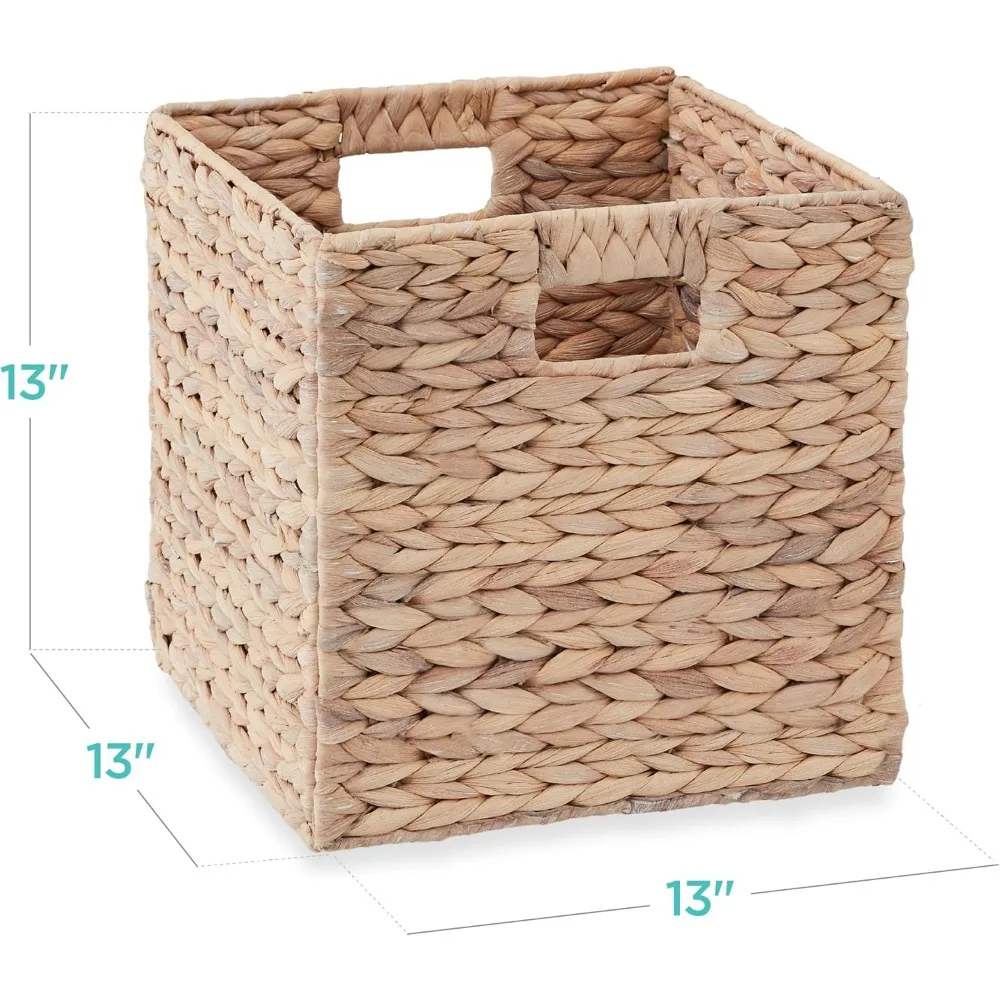
Critical Warnings
- Never soak baskets in water
- Avoid commercial cleaners, polishes, and furniture sprays
- Keep baskets away from steam or high moisture during cleaning
- Ensure baskets dry completely after any cleaning involving moisture
For baskets with decorative elements like paint, beads, or fabric, even more care is required. Using non-toxic basket cleaning solutions is especially important for these special pieces and for baskets that will store food items.
Storage Solutions for Long-Term Preservation
Proper storage is crucial when baskets aren’t in use, particularly for seasonal items or collector pieces. The right storage techniques prevent deformation, discoloration, and structural damage.
Selecting Appropriate Storage Locations
Choose areas that are:
– Cool and dry (avoid basements, attics, and garages)
– Away from exterior walls where temperature fluctuates
– Protected from direct sunlight and bright artificial light
– Well-ventilated to prevent humidity buildup
– Free from heavy foot traffic to avoid accidental bumps
Supporting Basket Structure
- Fill baskets with acid-free tissue paper to maintain their shape
- For flat or flexible baskets, use custom-sized acid-free board as support
- Never force baskets into spaces that compress their structure
- Ensure weight distribution is even throughout the basket
Proper Basket Orientation
- Store baskets in their natural, intended position
- Never stack heavy items inside lightweight baskets
- If stacking is necessary, place the heaviest baskets at the bottom
- Insert tissue paper between stacked baskets to prevent scratching
- Rotate stored baskets periodically to avoid permanent deformation
Our wicker storage baskets can often be nested within each other for storage, but be careful not to force smaller baskets into tight spaces.
Covering Options
- Use breathable cotton or muslin covers in dry environments
- For humid environments, consider sealed containers with desiccants
- Never use plastic bags, which trap moisture and promote mold
- If using plastic containers, ensure they have ventilation holes
Pest Prevention and Management
Natural fiber baskets are particularly vulnerable to pests that feed on organic materials. A proactive approach to pest prevention is far easier than dealing with an infestation.
Common Basket Pests
- Carpet beetles: Small dark beetles whose larvae feed on natural fibers
- Silverfish: Silver-gray, carrot-shaped insects that damage basket materials
- Rodents: Mice and rats that chew basket materials for nesting
- Wood-boring insects: Beetles and larvae that tunnel through rattan and other materials
Signs of Infestation
- Small holes or tunnels in the basket material
- Fine powder (frass) beneath or inside baskets
- Shed skins or casings near baskets
- Visible insects or larvae
- Unexplained damage or weakening of fibers
Preventative Measures
- Inspect new baskets thoroughly before bringing them into your home
- Check existing baskets quarterly for signs of pests
- Keep storage areas clean and dust-free
- Use cedar blocks or lavender sachets as natural deterrents (not in direct contact)
- Consider our rattan storage baskets with tight weaving patterns that offer better protection against pests
Safe Treatment Options
If you discover an infestation:
1. Isolate affected baskets immediately
2. For small infestations, place the basket in a sealed plastic bag and freeze for 1 week
3. Alternatively, place in a hot, sunny location (like a closed car) on a warm day
4. For valuable baskets, consult a professional conservator about anoxic (oxygen-free) treatments
Harmful Treatments to Avoid
Well-intentioned but improper treatments can cause irreversible damage to basket fibers. Avoid these common mistakes to preserve your basket’s integrity and value.
Chemical Treatments to Avoid
- Shellac, varnish, and lacquer: Create brittle coatings that crack and peel
- Polyurethane: Prevents natural fibers from “breathing,” trapping moisture
- Bleach: Weakens fibers and causes discoloration
- Harsh detergents: Strip natural oils and damage fiber integrity
- Furniture polish: Attracts dust and creates sticky residue
Why These Treatments Harm Baskets
These treatments may seem to enhance appearance initially but cause long-term damage by:
– Preventing natural expansion and contraction of fibers
– Trapping moisture that leads to mold and rot
– Altering the natural appearance and patina
– Making future repairs more difficult or impossible
– Significantly reducing both aesthetic and monetary value
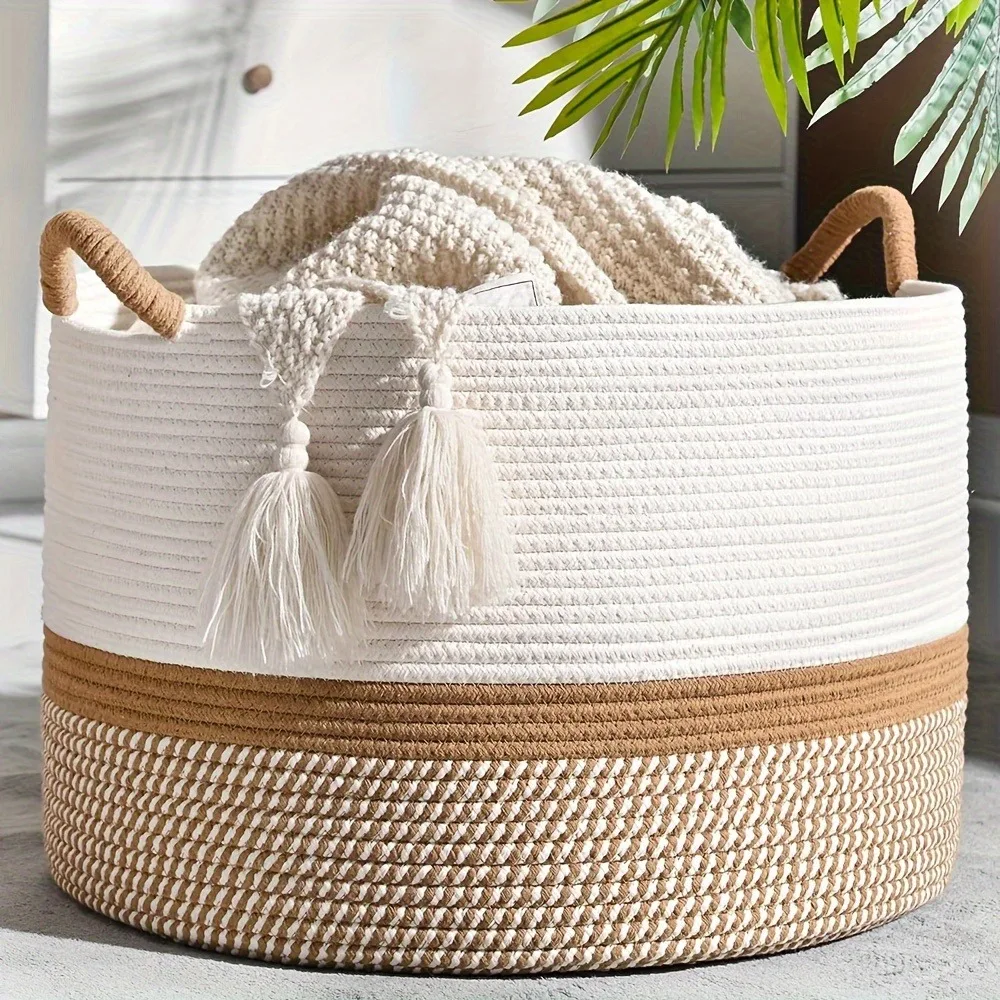
Instead of these harmful treatments, focus on proper cleaning, handling, and environmental control as outlined in previous sections. These preservation methods maintain the basket’s natural beauty while ensuring its longevity.
Minor Repairs and When to Seek Professional Conservation
Some basket damage can be addressed with simple at-home repairs, while other issues require professional intervention. Knowing the difference helps preserve your basket’s integrity and value.
DIY-Appropriate Repairs
- Tucking loose ends: Using a small, blunt tool to gently push protruding fiber ends back into the weave
- Gentle reshaping: Lightly misting with distilled water and reshaping (for minor warping only)
- Stabilizing loose weaving: Supporting weakened areas with archival-quality materials
Tools for Minor Repairs
- Small, blunt wooden tools (like a popsicle stick with rounded edges)
- Fine-point tweezers for precision work
- Distilled water in a spray bottle for minimal moisture when needed
- Acid-free tissue paper for support during reshaping
When to Seek Professional Help
Contact a professional conservator when you notice:
– Significant structural damage affecting basket integrity
– Extensive breakage of multiple weavers or spokes
– Serious insect damage or active infestation
– Mold or mildew that doesn’t respond to gentle cleaning
– Historical or high-value baskets requiring any repair
Maintaining your baskets helps with effortless laundry organization wicker baskets and keeps your storage solutions functional for years to come.
Finding a Qualified Conservator
- Contact the American Institute for Conservation (AIC) for referrals
- Ask museums with basket collections for recommendations
- Request references and examples of previous basket conservation work
- Inquire about experience with your specific basket material or type
Using Baskets for Food Storage and Preservation
Baskets aren’t just beautiful—they’re functional storage solutions that can help keep certain foods fresh longer. Their natural ventilation properties make them ideal for specific food items.
Best Produce for Basket Storage
| Food Item | Basket Type | Benefits | Storage Tips |
|---|---|---|---|
| Onions & Garlic | Open weave | Air circulation prevents sprouting | Store in cool, dark location |
| Potatoes | Dark, covered | Prevents light exposure/greening | Keep separate from onions |
| Apples | Shallow, open | Allows ethylene gas release | Check regularly for ripening |
| Root vegetables | Open weave | Prevents moisture buildup | Line with paper for cleanliness |
| Bread | Tight weave with lid | Maintains freshness | Line with cloth for crumb containment |
Why Baskets Work for Food Storage
Natural fiber baskets provide ideal conditions for many foods by:
– Allowing air circulation that prevents moisture buildup
– Providing darkness that slows sprouting and greening
– Creating a barrier against light damage while allowing ventilation
– Absorbing excess moisture without becoming damp
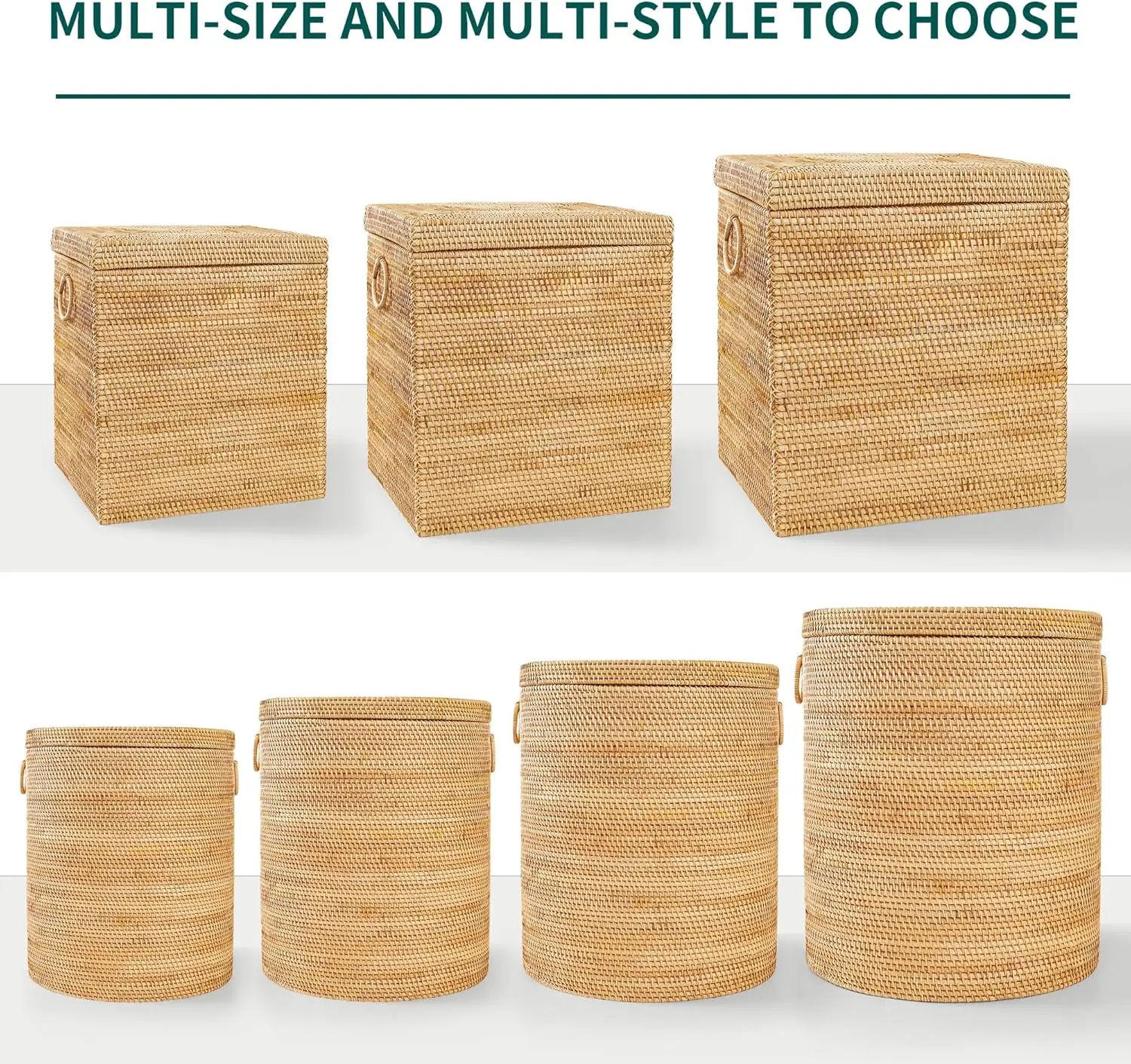
Strategic Food Organization
The principles used in wicker laundry basket storage ideas can be applied to food organization:
– Group similar items together for easy access
– Place frequently used items in front
– Use smaller baskets within larger ones for categorization
– Label baskets clearly for pantry organization
Black Wicker Baskets, Rattan Storage Baskets, Tall Wicker Baskets, Wicker Shelf Baskets, Woven Storage Baskets
5-Tier Distressed Black Wood Frame Storage Tower with Removable Wicker Baskets for Home Organization$715.80 Select options This product has multiple variants. The options may be chosen on the product pageRattan Shelf Baskets, Rattan Storage Baskets, Small Wicker Baskets, Square Wicker Baskets
Square Plastic Wicker Storage Baskets Set of 3 with Collapsible Design for Cube Storage Organization$185.47 Select options This product has multiple variants. The options may be chosen on the product pageWicker Baskets with Handles, Wicker Storage Baskets, Woven Storage Baskets
$137.92 Select options This product has multiple variants. The options may be chosen on the product pageWicker Hampers with Lids, Wicker Laundry Baskets with Lids, Wicker Laundry Hampers
$127.33 Select options This product has multiple variants. The options may be chosen on the product pageRattan Shelf Baskets, Rattan Storage Baskets
$345.47 Select options This product has multiple variants. The options may be chosen on the product pageLarge Wicker Laundry Baskets, Rattan Laundry Baskets, Woven Laundry Hampers
$162.32 Select options This product has multiple variants. The options may be chosen on the product page
Food Safety Considerations
- Always clean baskets thoroughly before using for food
- Never store wet produce directly in baskets
- Keep food-designated baskets separate from other household baskets
- Use removable liners for easy cleaning and replacement
Can Baskets Be Used in High-Moisture Environments?
Many Tidy Treasure customers ask whether natural fiber baskets can be used in bathrooms, kitchens, or outdoor settings. While these environments pose challenges, with proper precautions, certain baskets can function well in higher-moisture areas.
Moisture Risks for Baskets
Consistent exposure to high moisture can cause:
– Mold and mildew growth
– Warping and deformation
– Weakening of fibers and structural integrity
– Unpleasant odors that are difficult to remove
Solutions for High-Moisture Settings
If you want to use baskets in bathrooms or kitchens, consider these approaches:
– Use removable plastic or fabric liners that can be washed
– Select wicker laundry hampers specifically designed with moisture resistance
– Apply moisture barriers like plastic trays beneath baskets
– Choose baskets with synthetic fiber blends that resist moisture
– Ensure excellent ventilation in the room to reduce ambient humidity
Maintenance Requirements
Baskets in high-moisture environments require:
– Weekly inspection for mold or mildew
– Complete drying if they become wet
– Regular rotation to less humid areas when possible
– More frequent cleaning than baskets in drier locations
– Replacement of liners at first signs of mildew
Do Different Cultural Baskets Require Special Preservation Techniques?
Baskets from various cultural traditions may require specialized care approaches based on their materials, construction techniques, and cultural significance.
Cultural Basket Traditions
- Native American baskets often incorporate materials like sweet grass, cedar bark, or spruce root that respond differently to environmental changes
- African baskets frequently feature intricate patterns and sometimes include leather, beads, or dyed fibers requiring special attention
- Asian basketry may include bamboo treatments or lacquers that need specific preservation approaches
- European traditions often feature willow and other materials that have their own preservation needs
Special Preservation Considerations
For culturally significant baskets:
– Research the specific cultural context and traditional care methods
– Consult with cultural institutions or artisans from that tradition when possible
– Be particularly mindful of decorative elements like shells, feathers, or natural dyes
– Consider the spiritual or ceremonial significance that might inform handling and display
– Document the basket’s provenance and cultural information for future reference
Resources for Cultural Basket Care
- Museum conservation departments often share guidelines for specific cultural traditions
- Cultural centers maintained by indigenous groups provide valuable information
- University anthropology departments may offer resources or references
- Organizations dedicated to preserving traditional crafts can provide guidance
Which Basket Types Are Most Durable for Long-Term Use?
When investing in quality baskets, durability becomes an important consideration. Different materials and construction techniques significantly impact how long a basket will maintain both its appearance and functionality.
Material Durability Rankings
From most to least durable for everyday use:
1. Rattan: Exceptional strength-to-weight ratio, resists breaking and splitting
2. Bamboo: Very strong but somewhat less flexible than rattan
3. Heavy-gauge reed: Sturdy with proper care, though more prone to drying than rattan
4. Willow: Durable when properly harvested and prepared
5. Seagrass: Moderate durability, may show wear more quickly
6. Water hyacinth: Beautiful but less durable for heavy daily use
Construction Features for Longevity
Look for these quality indicators when selecting baskets for long-term use:
– Tight, even weaving patterns without gaps
– Reinforced rims and handles
– Solid base construction without wobbling
– Double-woven corners on rectangular baskets
– Smooth, splinter-free finish indicating quality materials
The most durable baskets combine quality materials with excellent craftsmanship. At Tidy Treasure, we select products that meet high standards for both beauty and durability, ensuring your storage solutions remain functional and attractive for years to come.

